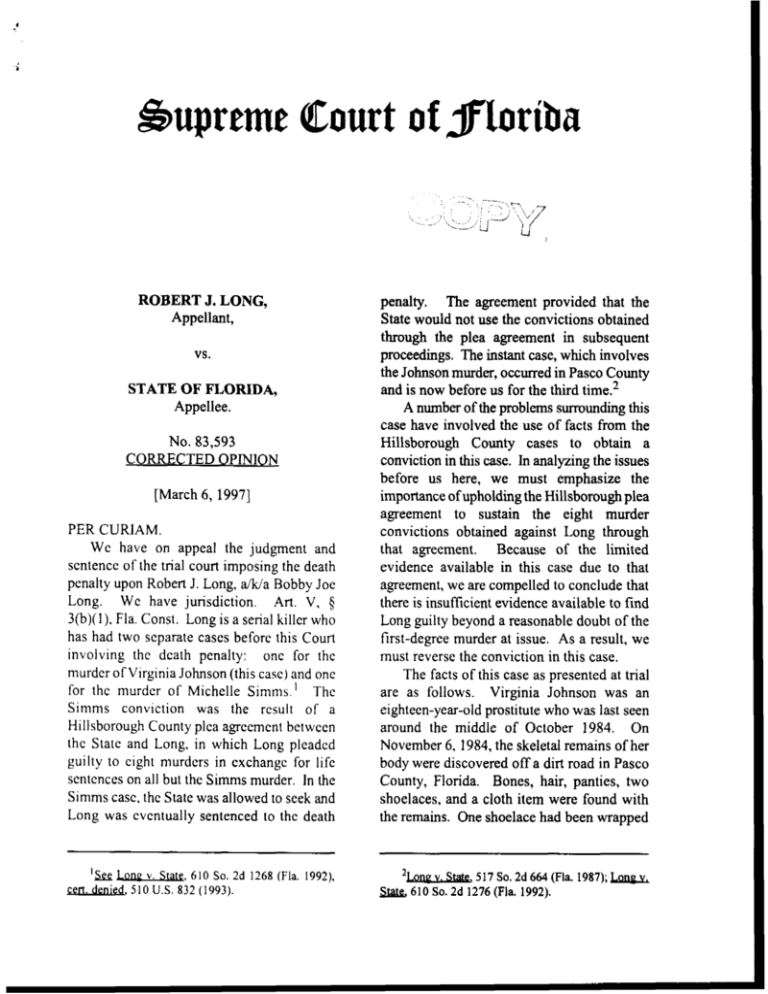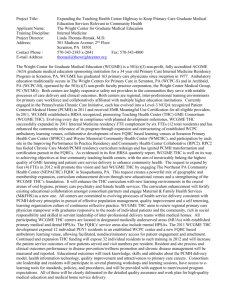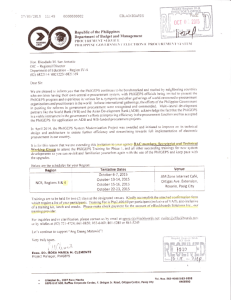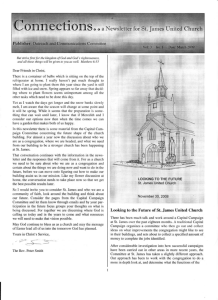Opinion
advertisement

&upreme Court of $lortba ROBERT J. LONG, Appellant, vs. STATE OF FLORIDA, Appellee. No.83,593 CORRECTED OPINION [March 6 , 19971 PER CURIAM. We have on appeal the judgment and scntence of the trial court imposing the death penalty upon Robert J. Long, dWa Bobby Joe Long. Wc have jurisdiction. Art. V, 8 3(b)(l). Fla. Const. Long is a serial killer who has had two separate cases beforc this Coun involving thc dcath penalty: one for the murdcr of Virginia Johnson (this casc) and onc for thc murdcr of Michelle Sininis.' Thc Sinims conviction was the rcsult of a Hillsborough County plca agrecmcnt betwccn thc Staic and Long, in which Long pleadcd guilty to cighi niurdcrs in cxchangc for life scntcnces on all but the Simms murder. In the Simrns casc, the State was allowed to seek and Long was cvcntually sentenced to the death '&I one v. Stak, 610 So. 2d 1268 (Fla. 1992), 5 10 U.S. 832 (1993). penalty. The agreement provided that the State would not use the convictions obtained through the plea agreement in subsequent proceedings, The instant case, which involves the Johnson murder, occurred in Pasco County and is now before us for the third t i n e 2 A number of the problems surrounding this case have involved the use of facts from the Hillsborough County cases to obtain a conviction in this case. In analyzing the issues before us here, we must emphasize the importance of upholding the Hillsborough plea agreement to sustain the eight murder convictions obtained against Long through that agreement. Because of the limited evidence available in this case due to that agreement, we are compelled to conclude that there is insufficient evidence available to find Long guilty beyond a reasonable doubt of the first-degree murder at issue. As a result, we must reverse the conviction in this case. The facts of this case as presented at trial are as follows. Virginia Johnson was an eighteen-year-old prostitute who was last seen around the middle of October 1984. On November 6, 1984, the skeletal remains of her body were discovered off a dirt road in Pasco County, Florida. Bones, hair, panties, two shoelaces, and a cloth item were found with the remains. One shoelace had been wrapped 2~ v. S a 517 So. 2d 664 (Fla 1987); &&, 610 So. 2d 1276 (Fla. 1992). Long put on no evidence in mitigation. The jury recommended death by a vote of seven to five. The trial judge followed that recommendation. finding three factors in aggra~ation,~ one statutory mitigating factor? and several non-statutory mitigating factors.' Long raises twelve issues in this appeal,6 one of which we find to be dispositive. Long argues that the evidence in this case is insufficient to sustain the conviction for first-degree murder. Based on the evidence presented, the law requires us to agree. Thc State bears the responsibility of proving a defendant's guilt beyond and to the exclusion of a reasonable doubt. Cox v, State, 555 So. twice around the victim's neck. The other shoelace was found wrapped around the victim's hand. It was estimated that the victim had been dead from ten to fifteen days. The cause of death was most likely the result of "homicidal violence, probably garrotment." The victim was identified through dental records. On November 16, 1984, Long was arrested for the abduction of Lisa McVey, who was allowed to testify in this case as to some of the details of her abduction. After Long was arrested in the McVey case, his automobile was impounded and an extensive search of the vehicle was conducted. Two hairs found in the car were consistent with the victim's hair in this case. Additionally, a carpet fiber found at the crime scene matched the carpet of Long's automobile. The State introduced a portion of a videotaped CBS interview of Long. In thc tape, Long specifically refcrrcd to abducting McVey and gave vague refercnces to thc fact that he had killed others. In addition 10 other statemcnts, he told the interviewer: 'Long was previously convicted of another violent felony, the murder was especially heinous, atrocious, or cruel (HAC), and the murder was committed in a cold, calculated, and premeditated manner without any pretense of moral or legal justification (CCP). 'Long's capacity to conform his conduct to the requirements of law was substantially impaired. 'Long was slightly remorseful, had rescued a cousin from drowning, was a good father, had mental problems that did not reach a statutory mitigating level, and was mistreated as a child, Whcn I saw thcni walking down the strcet, it was like A. B, C, D. I pull ovcr, thcy get in. I drivc a littlc ways, stop, pull a knifc, a gun. whatcvcr. tic thcni up. takc thcni out. And that would bc I t , And they all wcnt cxactly thc s m i c until McVcy canic along. 'Long contends that ( 1 ) the trial judge erroneously allowed the testimony of Lisa McVey regarding her abduction by Long; (2) the trial judge erred in admitting into evidence the CBS taped interview nf Long because Long was told it could not be used against him; ( 3 )the trial judge erred in admitting the taped interview because if was irrelevant and concerned crimes that were excluded by the plea agreement; (4) the trial judge erred in allowing opinion testimony by a hair and fiber expert: (5)the evidence was insuficient to sustain a conviction: ( 6 ) hearsay evidence on other victims in police reports was erroneously read to the jury; (7) the murder was not CCP; (R) the jury instruction on HAC was unconstitutional; (9) the murder was not HAC; (10) the trial judge improperly found and weighed factors in mitigation; ( 1 I ) the death penalty is inappropriate under the circumstances of this case; and (12) the death penalty is unconstitutional. On this cvidcncc. Long was convicicd of lirsidcgrcc murdcr. At thc pcnalty-phasc proccoding. thc Siatc rclicd on thc cvidcnce produced 31 trial and introduccd cvidcncc of Long's prior convictions, including burglary. kidnapping, arnicd robbcry. and scvcral scxual baltcrics. No niurdcr convictions wcrc introduccd. -2- fiber, is not competent to support the 2d 352 (Fla. 1989); Davis v. Sta&, 9 0 So. 2d 629 (Fla. 1956). In order for the State to prove premeditated first-degree murder through circumstantial evidence, the evidence must be inconsistent with any reasonable hypothesis of innocence. &d ford v. State, 589 So. 2d 245 (Fla. 1991), cert. denied, 503 U.S.1009 (1992); Wilson v. State, 493 So. 2d 1019 (Fla. 1986); McArthur v. State, 351 So. 2d 972 (Fla. 1977). The question of whether the evidence is inconsistent with any other reasonable inference is a question of fact for the jury. Bedford, 589 So, 2d at 25; Bolton v, State, 573 So. 2d 284 (Fla. 1990), denied, 500 U.S. 960 (1991). Nevertheless, a jury's verdict on this issue must be rwersed on appeal if the verdict is not supported by competent, substantial evidence. Evidence that creates nothing more than a strong suspicion that a defendant committed the crime is not sufficient to support a conviction. Cox: Scott v. State, 581 So. 2d 887 (Fla. 1991); Williams v. State, 143 So. 2d 484 (Fla. conviction. Hair comparisons cannot constitute a basis for positive personal identification because hairs from two different people may have precisely the same characteristics. Scott v. State, 581 So. 2d 887 (Fla, 1991); Borstman v, State, 530 So. 2d 368 (Fla. 2d DCA), review den ied, 539 So. 2d 476 (Fla. 1988);Jackson v. XtaE, 5 1 1 So. 2d 1047 (Fla. 2d DCA 1987). Moreover. even where evidence does produce a positive identification, such as fingerprints, the State must still introduce some other evidence to link a defendant to a crime. &, u, a i l l o v, State, 417 So. 2d 257 (Fla. 1982) (where only evidence connecting defendant to crime was fact that defendant's fingerprints were left at scene, evidence insufiicient to convict). Here. the other evidence connecting Long to this murder was the carpet fiber; yet the State introduced no evidence to indicate that thc carpet fiber could have come only from Long's car or that thc carpet was placcd in only a fcw cars. The facts of this case arc similar to those prcscntcd to us in h. In that case, the cvidencc reflectcd that hair and blood consistent with the defendant's were found in the victim's car. Also found in the car was a boot print that appeared to have becn made by a military boot and the dcfcndant was in the military. Thc defendant did not know the victim and no onc testificd that thcy had becn secn togcthcr. While we noted that this cvidcncc crcatcd a suspicion that Cox had murdcrcd the victim, it did not prove beyond a rcasonablc doubt that he had done so. This was cspecially true givcn that hair analysis and coniparison is not an absolutely certain and rcliable method of identification. Just as we werc compclled to find thc evidence insufficient in Qx, so, too, must we do here, In holding that the evidence in this case m; 1962). In this case. thc Statc introduccd cvidcncc thar Long abducted and then rcleascd McVcy; that 3 scarch of Long's car aftcr hc was apprchcndcd for thc McVcy abduction rcvcalcd two hairs consistcnt with that of thc \,iciini: that a carpct fiber from thc scenc ofthc crtnic niatchcd thc carpct in Long's car; and that Long madc vague statcnicnts to thc clTcct thai he had killcd "others." Whilc thc hair and tiher ciidcncc in conjunction with rhc othcr ciidcncc in [his casc ccrtainly raiscs 3 v q <trong .;uspicion that Long killcd thc vtclini. wrc find \ha1 i1 is insulficicnt to csiablish b c y i d J rcasonablc doubt that hc did so. First. n o onc saw Long with thc victim. and no statcnicnts wcrc introduced in which Long staicd that hc killcd thc victim in this cast. Furthcr, 3s cxplaincd bclow. thc critical c\rdcncc linking Long to the niurdcr in this caw. thc two strands of hair and \hc carpet -3- An Appeal from the Circuit Court in and for Pasco County, Charles W. Cope, Judge Case No. 84-2275CFAES was insufficient, we recognize that the State was limited in the evidence it could introduce given our previous rulings in this case. However, as we indicated previously, the evidence that could be introduced in this case was extremely limited because of previously committed errors and the need to uphold the Hillsborough County plea agreehent. In fact, in one of his other issues in this proceeding, Long contends that the evidence introduced regarding the McVey incident violated that agreement. Our resolution of the sufficiencyof-the-evidence claim, however, precludes the need for this Court to address the proper admission of that evidence.' Accordingly, for the reasons expressed. wc vacate Long's death sentence, reverse his conviction, and remand to the trial court with directions to enter an order of acquittal for this crimc. It is so ordered. James Marion Moorman, Public Dcfender and A, Anne Owens, Assistant Public Defender, Tenth Judicial Circuit, Bartow, Florida, for Appellant Robert A. Butterworth, Attorney General and Robert J. Landry, Assistant Attorney General, Tampa, Florida, for Appellee OVERTON, SHAW, GRIMES, HARDING, WELLS and ANSTEAD, JJ., concur. NOT FINAL UNTIL TIME EXPIRES TO FILE REHEARING MOTION AND. IF FILED, DETERMINED. v. st& . 623 so. 2d 967 rhe defendant \$asconvicted on evidencr ciiiiilar t i 1 that presented in this cxse. Hnur\t.r. 111 that a x < . tlir defendant had confessed to a pre\ i i w \ niirrllrr th3t nlnmst identical to the crinic at i < w c and thar y r r t I ~ ~ L Iniurder \ \\a used to prove identit! m J e r the \rule. y , Stall . I10 So. 2J 0 5 4 ( T l a . ) . 301 I:.S. 837 ( 1959). While w e did st3te in i t ~ i \i ~ S~ t a ~ 010 . So. 2d 1276 (Fta. 1992). that the \!;\ r> ~ h d u c t i o ncould he used 10 prove identit). u e did nlrt d o w in rhr W i l l i m rule context: u e did 50 to enable tlw State to shmr hom Long Ha5 apprehended and idrntilied as possihl) heing connected to this crime. Further. Lnng did not kill McVey and the McVe) incident is insutliiitmtl~similar to qualib for admission under the ntlr. 'N'e note that in I 1.13 I993 ). e. -4-






